We make a lot of eating decisions subconsciously and when it comes to portion control and food intake, it seems size, design and colour really can make a difference. This is based on a little trick known as the Delboeuf illusion which affects how much food we serve ourselves and how much we think we’ve eaten.
The Delboeuf illusion is a change in the perceived size of one circle in the presence of another concentric circle. I now want to extrapolate this illusion into a context of food on a plate.
Here is the classic Delboeuf illusion. Now assume it depicts two plates, with the black circle being a serving of some devine dish you’ve been craving. Putting all altruism aside, which plate do you choose?
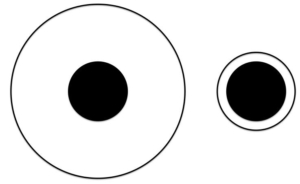
You knew it was a trick question, right? It was, after all, set out as being an illusion. Did you try to overthink it? Both black circles are indeed exactly the same size. Interestingly, researchers have found this illusion is so entrained in our brains, that even knowing about it doesn’t stop the effect. So before feeling smug that your portion management is completely under control, imagine the kind of environment where you’re dishing up your food … you’re hungry, surrounded by enticing aromas, music or TV playing in the background, you’re distracted by the stimulating conversation of your dinner guests, or maybe children or pets are trying to get your attention … now you are serving yourself with much less consideration of the optico-geometric illusion revelations of the 1860s and the chances of unknowingly overindulging are much greater.
If overeating is a concern, then your best option is to use smaller dinner plates to use this Delboeuf effect to your advantage by increasing the chances of underserving yourself and yet still believe you have eaten a good-sized helping. This could work both ways too, if you want to eat more of something (and I’m thinking salad and veggies here, not cakes and pizza) use a larger plate to make the portion appear smaller than it really is.
Taking this illusionary concept a step further, a group of researchers looked at different width rims on the plates. They found that on plates of equal size with varying rim widths, the wider rims that placed an inner circle closer to the food also created a Delboeuf effect, causing a similar effect to the smaller plate in the image above. So there’s another design element to take into account when next shopping for plates.
And what about colour? Without exploring all the nuances of colours on our psychology, the key point here is the contrast between food colour and plate colour in enhancing the Delboeuf effect. When diners were given a choice of 2 pasta dishes, one in a red sauce and one in a white sauce, researchers found that they served themselves more when the food colour matched the plate than when it contrasted. So, in this study those having the red sauce pasta took more if they were given a red plate than a white plate and vice versa the white sauce group took more when given a white plate than a red plate. The contrast in colour makes the food portion stand out more making it visually perceived as larger. If you’re looking to reduce your portion sizes then choose a plate colour that contrasts with the colour of your food. Although, if you’re looking to increase you intake of green vegetables, then match them to a green plate!
If you want to really geek out on this effect, lets go even further and look at the colour of the table or tablecloth. A tablecloth that matches the plate increases the colour contrast between plate and food to enhance the Delboeuf effect, your portion stands out more, looks relatively larger and so helping you take less. On the other hand, greater contrast between tablecloth and plate reduces the Delboeuf effect making you more likely to overserve yourself and eat more.
There seem to be various applications for this effect that go beyond just trying to eat smaller portions. Being clever with laying the table could make food go further, which can be helpful when you have unplanned extras to feed. If you get frustrated with wastage, you can use this effect to discourage people piling more on their plates than they can finish. How it works with dishes of multiple coloured foods or plates with patterns, I really can’t say. The research on this is fairly limited, but you can certainly have fun playing with colours and trying things out.
And if it all got a bit too confusing, here’s a quick summary:
- Portions look bigger on smaller plates
- Portions look bigger when plate rims are wider
- Portions look bigger when the food colour contrasts with the plate colour
- Portions look bigger when the plate colour matches the tablecloth colour
References:
McClain et al. (2014) Visual illusions and plate design: the effects of plate rim widths and rim coloring on perceived food portion size. Int J Obes (Lond), 38(5):657-62.
Surkys et al. (2006) Delboeuf illusion study. Medicina (Kaunas), 42(8):673-81.
Van Ittersum and Wansink (2012) Plate Size and Color Suggestibility: The Delboeuf Illusion’s Bias on Serving and Eating Behavior. Journal of Consumer Research, 39(2):215-228.
Wansink and van Ittersum (2013) Portion size me: plate-size induced consumption norms and win-win solutions for reducing food intake and waste. J Exp Psychol Appl, 19(4):320-32.

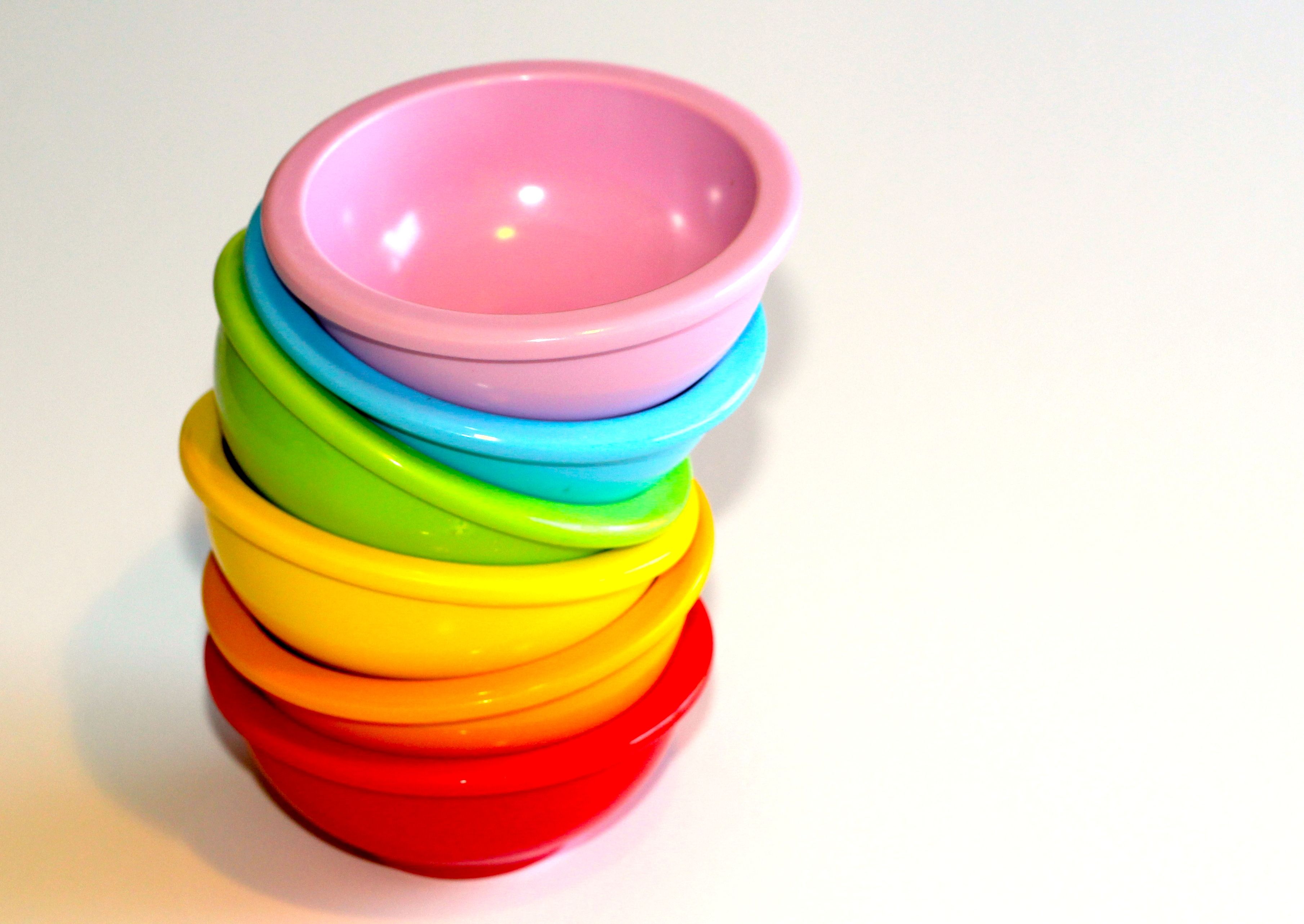
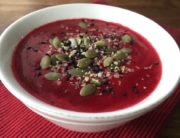
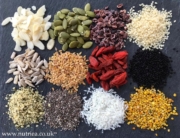

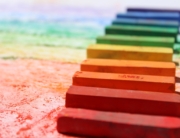
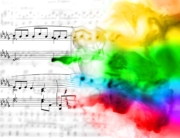
Leave A Comment